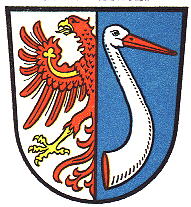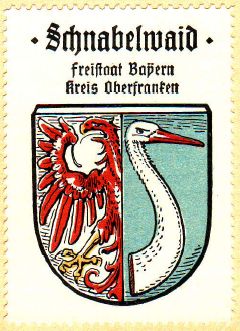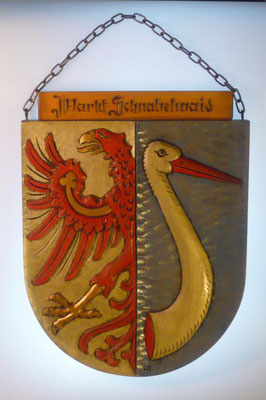Schnabelwaid: Difference between revisions
Knorrepoes (talk | contribs) m (Text replacement - "{{media}} Literature : Stadler, 1964-1971, 8 volumes." to "Literature : Stadler, 1964-1971, 8 volumes. {{media}}") |
Knorrepoes (talk | contribs) m (Text replacement - "Literature :" to "'''Literature''':") Tags: Mobile edit Mobile web edit |
||
| Line 30: | Line 30: | ||
|} | |} | ||
[[Civic Heraldry Literature - Germany|Literature]] : Stadler, 1964-1971, 8 volumes. | [[Civic Heraldry Literature - Germany|'''Literature''']]: Stadler, 1964-1971, 8 volumes. | ||
{{media}} | {{media}} | ||
Revision as of 05:07, 10 September 2022
This page is part of the German heraldry portal Deutsche Wappensammlung |
Heraldry of the World |
|
German heraldry:
|
Selected collector's items from Germany:
|
SCHNABELWAID
State : Bayern
District (Kreis) : Bayreuth (until 1973 Pegnitz)
Additions : 1978 Zips (partly)
| German |
Gespalten von Silber und Blau; vorne am Spalt ein halber, golden bewehrter roter Adler mit goldenem Kleestängel auf dem Flügel; hinten ein links gewendeter silberner Storchenrumpf mit rotem Schnabel. |
| English | No blazon/translation known. Please click here to send your (heraldic !) blazon or translation |
Origin/meaning
The arms were officially granted on November 27, 1672.
Schnabelwaid was sold in 1668 to Margrave Christian Ernst von Brandenburg-Bayreuth. The oldest seal dates from the same time and already shows the above arms. The eagle is the eagle of Brandenburg, the other half is a canting element (Schnabel = bill/beak). In the original seal the species of bird could not be distinguished, but it was mentioned in 1692 as a stork. The colours are most likely derived from the arms of the Lords of Künsberg, previous owners of the village.
| The arms by Hupp in the Kaffee Hag albums +/- 1925 |
The arms in the Deutsches Wappenmuseum |
Literature: Stadler, 1964-1971, 8 volumes.
Contact and Support
Partners:
Your logo here ?
Contact us
© since 1995, Heraldry of the World, Ralf Hartemink 
Index of the site














